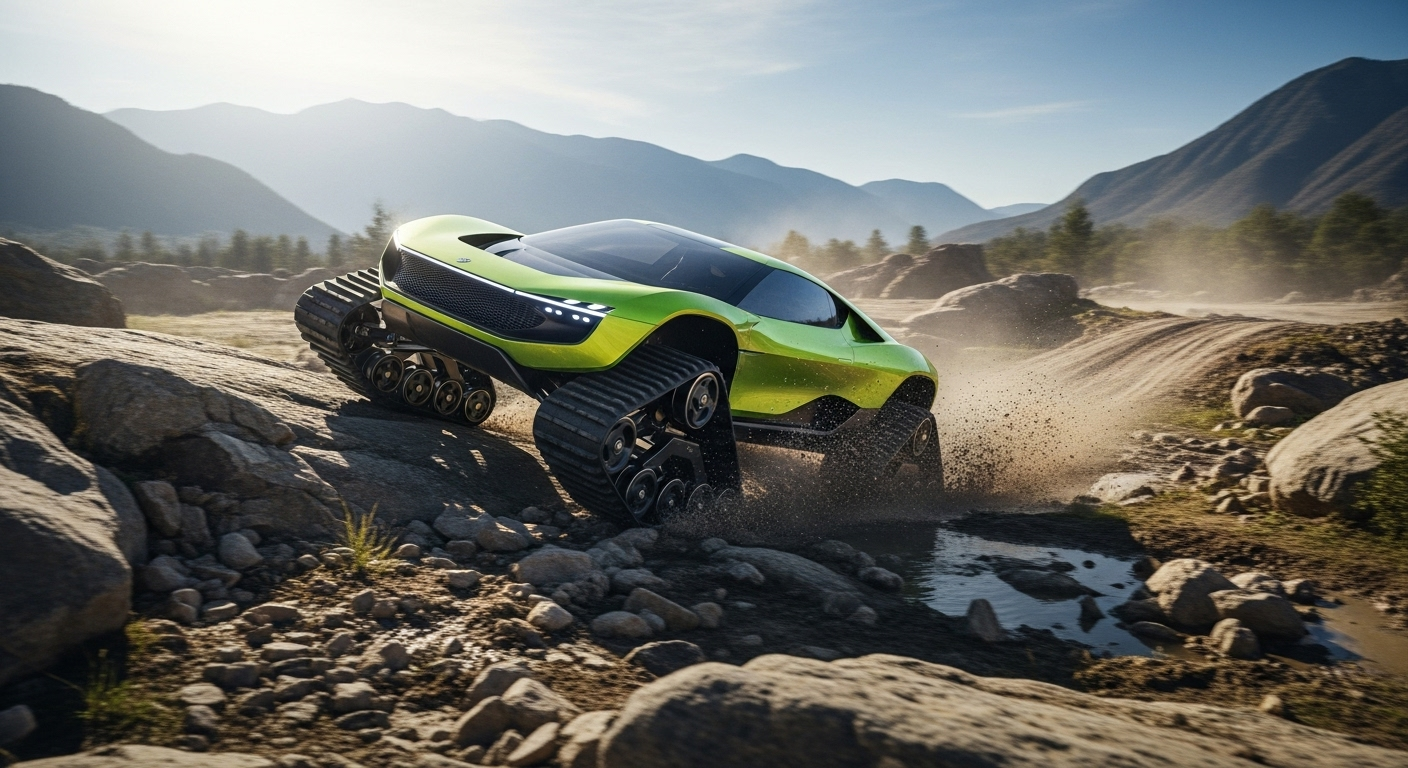Reinventing the Wheel: The Shift Towards Continuous-Track Mobility in Everyday Vehicles
The automotive industry is no stranger to innovation—historically, it has been a fertile ground for groundbreaking technologies. Yet, one of its most radical transformations may be just around the corner, as wheels, the very foundation of vehicular locomotion, are being reconsidered. The shift to continuous-track mobility, also known as caterpillar or tank tread technology, is an exciting development that could redefine our understanding of cars while providing a slew of benefits.

A Revolution in the Making: The History of Continuous-Track Mobility
Continuous-track mobility isn’t a new concept. Patented in 1901 by Alvin Orlando Lombard, this technology was initially used for heavy-duty applications like tanks and bulldozers. The design was simple yet brilliant—instead of relying on individual wheels, vehicles moved on a continuous belt of treads, providing superior traction and weight distribution.
Despite its military and industrial use, continuous-track technology has largely been overlooked for everyday vehicles. However, recent advancements and an increased focus on off-road capabilities have renewed interest in this area.
Driving the Change: The Resurgence of Continuous-Track Mobility
The appeal of continuous-track mobility lies in its ability to navigate diverse terrains with ease. Whether it’s snow, mud, or rocky landscapes, vehicles fitted with this technology can handle it all, making it an attractive feature for adventure seekers and off-road enthusiasts.
Moreover, continuous tracks can distribute a vehicle’s weight across a larger surface area than traditional wheels, reducing ground pressure and minimizing damage to sensitive terrains— a significant advancement towards more sustainable off-roading.
A Bumpy Ride: Challenges in Implementing Continuous-Track Mobility
Despite its advantages, the transition towards continuous-track mobility isn’t without challenges. Firstly, there are concerns about wear and tear—continuous tracks can be more prone to damage than traditional wheels and can be more expensive to replace.
Additionally, continuous tracks can negatively impact a vehicle’s speed and fuel efficiency, primarily due to increased rolling resistance. However, ongoing research into advanced materials and design optimizations promises to mitigate these issues, making this technology more appealing for everyday use.
The Road Ahead: The Impact of Continuous-Track Mobility on the Automotive Industry
The potential shift towards continuous-track mobility could significantly impact the automotive industry, from vehicle design and manufacturing processes to driver education and road infrastructure.
For automakers, this shift could spark a wave of innovation, leading to new vehicle designs that prioritize durability, off-road capabilities, and environmental sustainability. On the other hand, drivers may need to learn new skills to navigate these vehicles, potentially reshaping driver education programs.
In conclusion, the shift towards continuous-track mobility represents an exciting frontier in the automotive world. While challenges remain, the potential benefits—ranging from superior off-road capabilities to reduced environmental impact—make this a trend worth watching. As we drive into the future, it’s clear that the road less traveled may not need a road at all.




